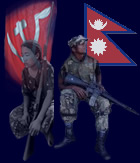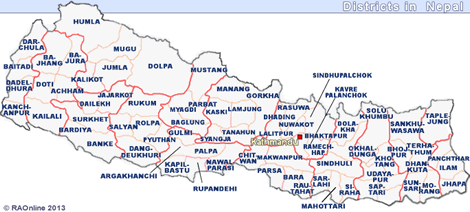
|
| Reports on Nepal's Civil War |
 |
|
| Maoist ceasefire - some gains, some violations |
September 2005, IRIN News report
KATHMANDU, 12 Sep 2005 (IRIN) - Civilians and NGO staff in remote parts of Nepal are asking Maoist rebels, who now control the majority of the Himalayan kingdom, what exactly their unilateral ceasefire announced on 3 September means.
Reports by Nepali media and human rights organisations suggest that the Maoists are still indulging in abductions, school closures, extortions and road blockades throughout the country. Activists said that the fact these activities continue indicate the Maoist leadership is not serious about the ceasefire.
Following reports that Maoist foot soldiers are still involved in harassing civilians, their leader, Prachanda, released a statement saying such violations would be investigated.
Despite the commitment from the Maoists' leadership, there are fresh reports that abductions and school closures continue. On 11 September, several civilians were abducted from Khandbari, district headquarters of Sankuwasabha, a Maoist stronghold in eastern Nepal, nearly 200 km east of the capital.
In Udayapur, another district in the east of the country, the student wing of the rebel movement announced the closure of community schools, according to a statement by local teachers.
"The situation is still the same for us, even if there is a ceasefire," 65-year-old Bahadur Rai from Bhojpur said on reaching the city of Dharan, 220 km east of the capital.
In several districts of Paththar and Taplejung, in the extreme east, road blockades are still reported to be intact. "Local Maoist commanders said that the statement from their leaders is not enough and [they] have decided not to withdraw the [road] blockade," said local journalist Dambar Shrestha, who has been reporting on the post-ceasefire situation from Dharan.
According to villagers from Risku and Tribeni in Udayapur district, 170 km east of Kathmandu, they are still being forced to pay Maoist taxes and make food donations to the rebels. "A group of Maoists came and demanded cash and 20 kg of rice from each household," one local told Shrestha.
Despite the reports, human rights abuses by the rebels have decreased over the past nine days, some NGO staff said.
"There are definitely abductions and extortions taking place but they are way down compared to the situation before the ceasefire," said activist and development worker Sakuntala Baral in Biratnagar city in east Nepal.
Now activists want the government to acknowledge the Maoist's gesture by declaring a ceasefire themselves. "When one side has declared a ceasefire, the other part has to reciprocate," said former peace negotiator and rights activist Padma Ratna Tuladhar, in the capital.
There have been renewed calls for verification of the ceasefire. "Independent and impartial monitoring has to start immediately to make the ceasefire last," explained rights activist Rameswar Nepal, who added that the Maoists still have to work hard to win the trust of local people given the failure of previous ceasefires.
The first ceasefire of 2001 lasted only four months whereas the second ceasefire in 2003 petered out after seven months.
According to key political leaders, the seven main political parties in the country are making preparations to hold peace talks with rebel leaders in the near future in order to present a stronger, united front against the monarchy. "We are already making provisions to hold talks with the Maoists," said Bamdeb Gautam, senior leader of the communist Unified Marxist-Leninist (UML) party.
[ This report does not necessarily reflect the views of the United Nations]
Credit
and Copyright © IRIN 2005
Integrated
Regional Information Networks (IRIN), part of the UN Office for the Coordination
of Humanitarian Affairs (OCHA).

|
 |
 |